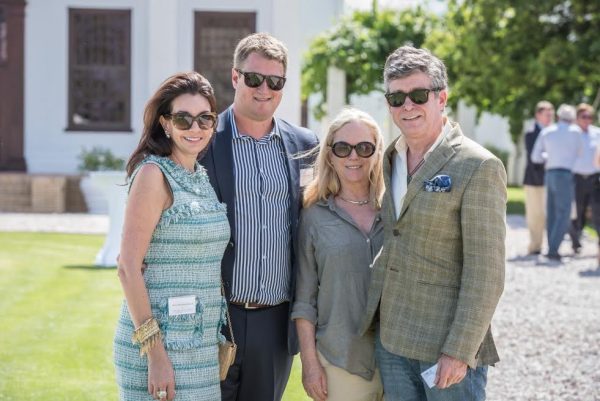Top image caption: Jay McInerney addressing the De Wetshof Celebration of Chardonnay
Jay McInerney, American novelist and wine writer for – inter alia – The Wall Street Journal, gave the address at this year’s De Wetshof Celebration of Chardonnay. In his first visit in 15 years, he noticed a profound shift in quality of his favourite white wine as made here in South Africa.
Chardonnay from the Cape can easily compete on the world stage, and many would put some Premier Cru white Burgundies to shame. According to Jay McInerney the quality of South African Chardonnay has improved remarkably since his first visit here in 2001.
“In that year, as well as another visit in 2004, I was impressed with much of what I tasted, but it was evident that Chardonnay was a minor part of the picture,” he said. “Chenin Blanc and Sauvignon Blanc were very much the dominant white grapes.”
McInerney said it was obvious that producers were perhaps still struggling to obtain good Chardonnay plant material.
“As you well know, when a few pioneers turned to Chardonnay in the seventies they found mostly diseased and virused clones at the Stellenbosch University collection,” he said. “Danie de Wet was one of those pioneers, and his efforts to bring good Chardonnay to the Cape were practically heroic. By the time I arrived at the turn of the millennium, much progress had been made, though Chardonnay was less than five percent of the total vineyard in the Cape and like the Chardonnays of Napa and Sonoma in that period, I felt there was a lot of over-oaking – or perhaps it was under-fruiting.”
Visiting South Africa fifteen years later, McInerney says he is “absolutely dazzled”. “Dazzled by the quality of Chardonnay available in the country, by the overall high quality of premium chardonnays, by the sophistication in the handling of oak on the part of those who use it, though I’ve also had some fine unoaked examples,” he said.
“I believe that style was first tried right here, at De Wetshof. And there is also a developing sense of terroir. It’s clear that Cape winemakers are learning where to plant Chardonnay, and how to grow it and how to vinify it.”
McInerney was especially impressed by a number of older Chardonnays he sampled during his current visit. “I was fortunate enough to taste a 1995 Thelema Chardonnay this past week at Singita Boulders and it was absolutely extraordinary, a honeyed, nutty wildly complex beauty that would absolutely put almost any white Burgundy of similar vintage in the shade,” he said.
“Last night I had a 93 De Wetshof Finesse and it was if anything more remarkable given its incredible freshness, it’s light colour, bright acidity and minerality. I believe it’s time for Cape Chardonnay makers and drinkers to consider the glories of aged Chardonnay, to hold back some of their wines for the future.”

Olive Hamilton Russell, Johann de Wet, Anne Hearst and Jay McInerney at the De Wetshof Chardonnay Celebration.
In closing he expressed a wish that Cape winemakers plant more plant more Chardonnay. “Yes, I know Chenin Blanc is, for historical reasons, the signature white grape of South Africa. And yes, there are some great ones made here.
“But from an international marketing perspective, Chenin will always be a niche. And personally, I will always yearn for Chardonnay. Chardonnay may be ubiquitous, it may be a cliché in many regards, it may be the source of a lot of mediocre plonk, and a lot of pumped-up, big cleavage floozies, but at it is capable of great profundity, and it can age and develop for decades.
“It is a bit of a contradiction, given its ability to produce wines of crystalline purity on the one hand and Baudelarian decadence on the other.
“It is, for me, the most seductive and the most romantic white grape on the planet.”




